The High Line Mural
Introduction
Text-to-speech Audio
Images
The High Line Baayfall's Mural
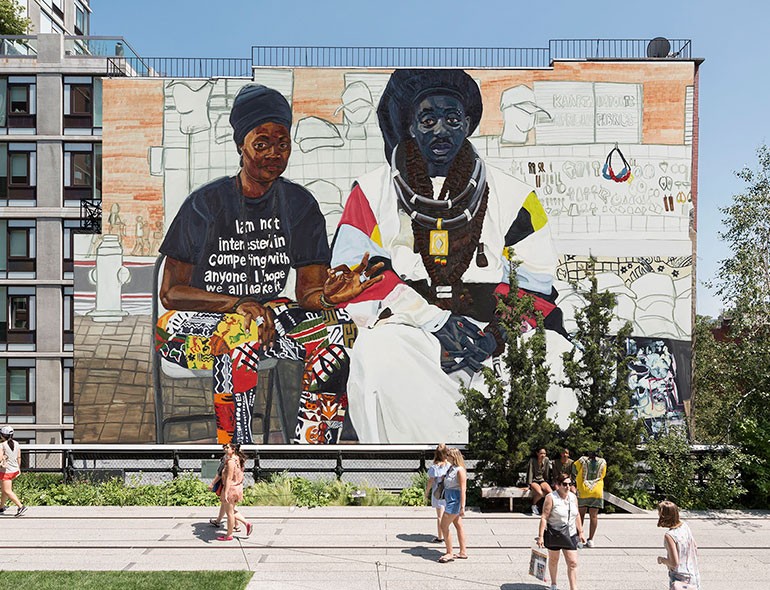
The space in front of the mural and installation process.
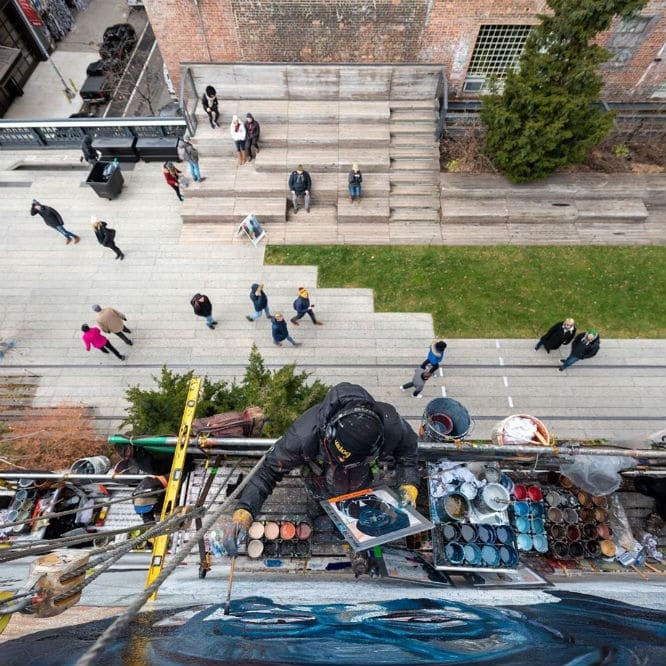
Social Distancing Circles on the High Line in 2020
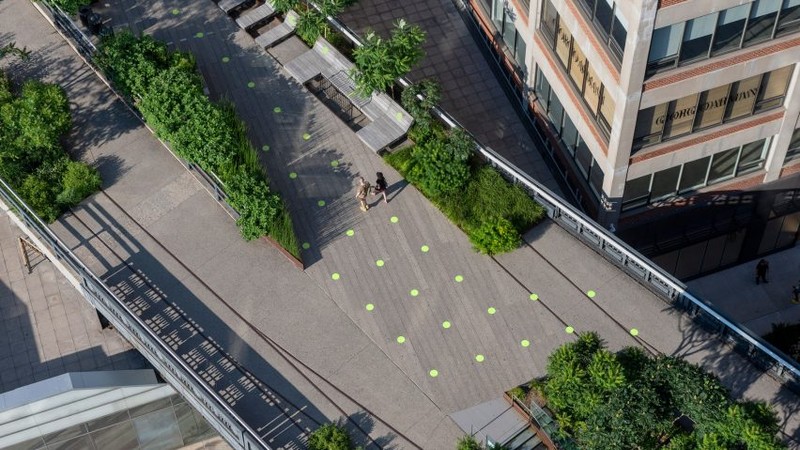
The High Line with no people during the pandemic.
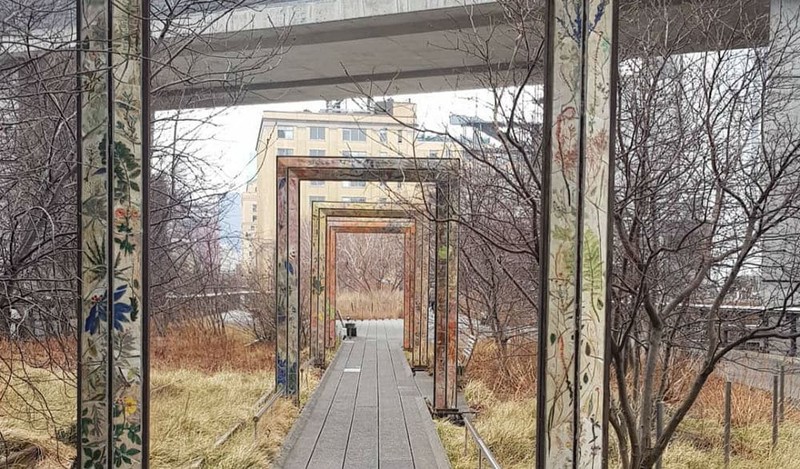
Crowds on the High Line before the pandemic.
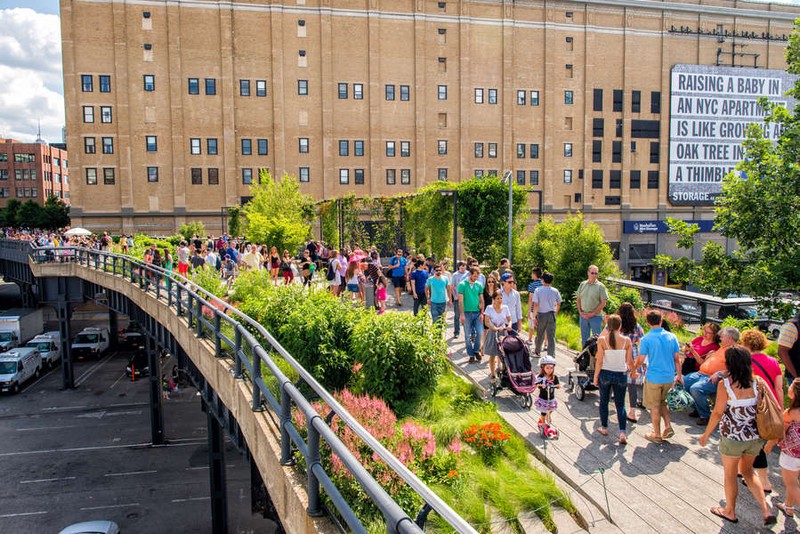
Backstory and Context
Text-to-speech Audio
In the mid-1800s, 10th Avenue was referred to as Death Avenue because the freight trains killed 540 people as they delivered food to the lower parts of Manhattan. In the 1920s, a stop signal used by Cowboys was implemented as a way to keep people safe. In 1933/34, the first train on The New High Line known as West Side Elevated line began transporting millions of produce through buildings like the National Biscuit Factory, known today as The Chelsea Market. By the 1960s, freight trains were barely in use anymore due to the rise in trucking.
Gentrification is the process of a poorer area being changed and taken over by wealthier people moving into the area. This term is closely linked to the modern development of New York City, and becomes more and more frequently used not only in the city, but in the surrounding boroughs. The process of gentrification can be an invasive and problematic process, as it often destroys the character of a neighborhood and pushes the original inhabitants out due to rising rents.
The High Line connects the many parts of Manhattan which have since been gentrified. The High Line starts in the Meatpacking District, itself having gone through many changes, and ends at the Hudson Yards, where the most amount of gentrification has taken place. It was once seen as a canvas covered in concrete, steel, and glass skyscrapers. The High LInephysically bridges together the industrial and modern sides of the city, but it also tells the story of gentrified and non-gentrified areas. Gentrification may shape how a city looks but those who inhabited the space shape how the story is told.
The New Museum located on West 22nd invited artist Jordan Casteel to hang a 1,400 square foot piece on the side of the building that faces The High Line. The 40 pieces of canvas depict Jordan Casteel's friend: Fallou Wadje “a Senegalese- born clothing designer.” Casteel chose to focus on Wadje “to have an immigrant story so prominently placed at this time in the world, in New York City-- it just feels right.” This is a time where America is trying to build walls around itself from the rest of the world, but what it needs to remember is that America is built on immigrants. The USA is a melting pot of different cultures, and this story needs to be remembered every day. The piece called “Baayfalls” can be viewed by anyone at The High Line.
The High Line is a space that can showcase art outdoors, serve as a means of transportation, and host greenery. It also represents the power of creating new spaces out of what was considered wasted space.
Sources
- Higgins, Adrian. “The High Line has been sidelined. When it reopens, New Yorkers may get the park they always wanted.” The Washington Post. June 24, 2020. Accessed November 2020. https://www.washingtonpost.com/lifestyle/home/the-high-line-has-been-sidelined-when-it-reopens-new-yorkers-may-get-the-park-they-always-wanted/2020/06/23/5e2a59e0-acd1-11ea-94d2-d7bc43b26bf9_story.html.
- Lescaze, Zoe. “Jordan Casteel Won’t Let You Look Away.” The New York Times. February 14, 2020. Accessed November 2020. https://www.nytimes.com/2020/02/14/arts/design/jordan-casteel-new-museum.html
- Plitt, Amy, Zoe Rosenberg, and Ameena Walker. “The High Line's transformative real estate boom, mapped.” Curbed New York. September 5, 2018. Accessed November 2020. https://ny.curbed.com/maps/nyc-high-line-construction-map
https://www.thehighline.org/art/projects/jordan-casteel/
https://secretnyc.co/the-high-line-just-got-a-brand-new-giant-mural/
https://www.dezeen.com/2020/07/21/paula-scher-graphics-high-line-social-distancing/
https://secretnyc.co/the-high-line-is-nycs-first-park-to-close-during-the-covid-19-pandemic/
https://www.thrillist.com/lifestyle/new-york/things-to-do-near-the-high-line-nyc
